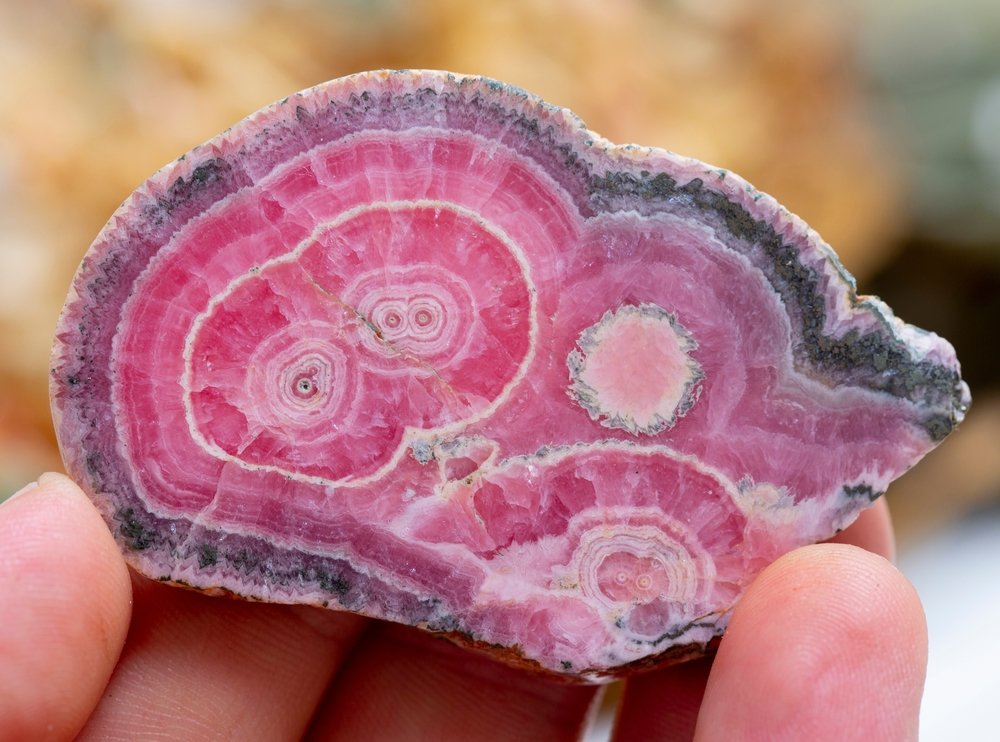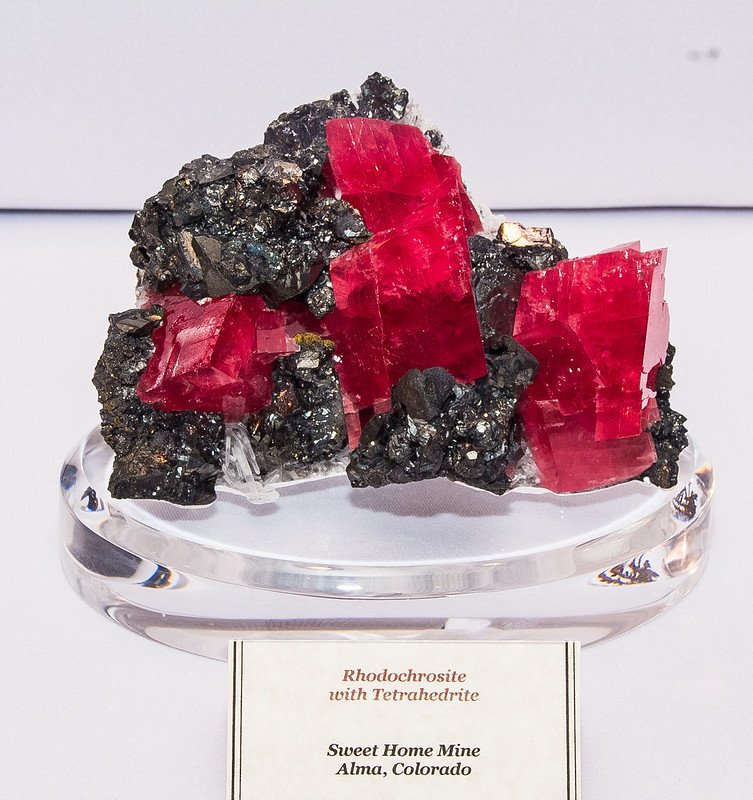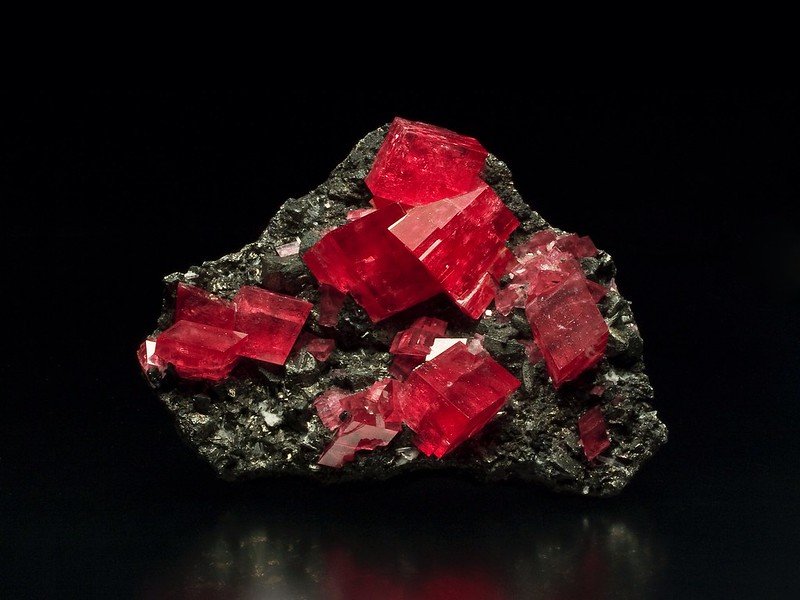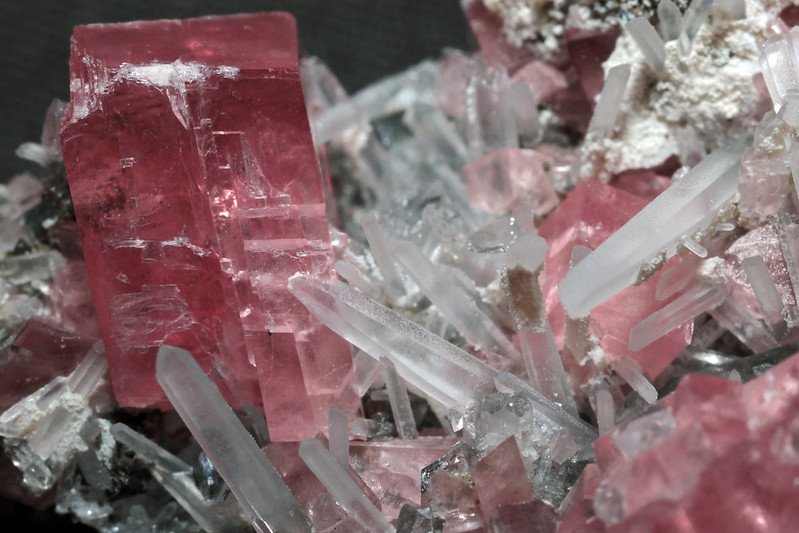Rhodochrosite shows up in a few different forms, all of them attractive to rockhounds. Whether it’s the white and red form or the rare, valuable crystals of the compound, it’s always a beautiful material. There’s a lot to learn about it, however, especially since it has these different forms that it can take.
Without further ado, let’s break into the heart of the matter in our guide to rhodochrosite!
What is Rhodochrosite?

Rhodochrosite is a manganese carbonate mineral that’s favored by lapidaries. In its most common form, it appears as a pink and white streaked stone, sometimes with a hint of black in the lining. In other cases, it can be found as single crystals with a deep red tone.
Rhodochrosite is similar to the manganese silicate rhodonite, and the two are often confused. The easiest way to distinguish them without any testing is simple. However, rhodochrosite is predominately white and pink, while rhodonite is generally pink and black. Rhodonite is much harder due to its silica content as well, so there’s no real excuse to confuse the two if you have the sample on hand.

Rhodochrosite is a fairly soft mineral. It sits at 3.5-4.0 on the Moh scale. This makes it less suitable for jewelry than many stones, although it does well as a cabochon. Crystalline rhodochrosite is cut into faceted gemstones on occasion, but these are really only suitable for low-impact jewelry like earrings. Most of those cut are bought by gem collectors instead of jewelers, destined for a display case rather than a ring or necklace.
The main use of this mineral is as an ore of the metal manganese. The metal is used in the manufacture of some aluminum alloys but primarily finds its way into a variety of cheaper stainless steel variations.
Crystalline Vs. Massive Rhodochrosite
There are two main forms of rhodochrosite that you’ll come across as a collector. The first is the massive pink and white formations. These are comprised of interlocking crystals of material rather than whole crystals themselves. The white banding found in massive forms of rhodochrosite is comprised of calcite, a calcium carbonate mineral.
The banded form is sometimes found as stalactites, particularly in South American localities. Those from the Argentinian Capillitas Mining District are considered to be some of the best examples. These are often sliced and polished for the collector and lapidary markets since the concentric bands lend themselves well to carving and cabochon cutting.
Rhodochrosite is also found as a pure mineral in small crystals. These are generally seen as mineral specimens since the crystal is too soft for most jewelry usage. These crystals range from light pink to deep red, depending on their exact composition.

Rhodochrosite crystals are fairly rare and always quite small. They’re a favorite for people doing micro mounting since well-formed crystals that are only a few millimeters across are more common than larger ones. The largest rhodochrosite crystal ever found, the Alma King, is only 10cm across. This may seem large, but remember that the largest rubies and emeralds weigh hundreds of pounds.
The rarity of crystalline rhodochrosite makes it a hot item with a high price tag. Those that are gemmy, meaning well-formed and transparent, are even more expensive. Single crystals can also be found in a less transparent tabular form that shows up in combination with other minerals on a regular basis.
On the other hand, the massive form can be found as cabochons sold for only a few dollars each. The stone is very soft but lends itself well to polishing, which makes it perfect for that use. The massive form is less prone to chipping, and scratches aren’t readily apparent on the surface of those used in jewelry since the stone is opaque in this form.
The two different forms of rhodochrosite hardly resemble each other, the uninitiated would assume they were different stones entirely. Regardless, they remain the same mineral with the same chemical composition. It’s just where and how they were formed that determines which kind of rhodochrosite you’re looking at.

Where is Rhodochrosite Found?
Rhodochrosite, in its usual form as a massive formation with calcite, is actually fairly common in the United States. The crystalline form can be found as well, the aforementioned Alma King is a stone from Colorado, for instance.
Indeed, the Sweet Home Mine in Park County, Colorado produces some of the finest samples of the mineral ever seen. Two of the largest crystals in the world are from this locale, and it’s regularly found in a cubic, crystalline form with high transparency and deep red color. The crystals found here are significant and definitely world-class, although there’s no public access to the mine.

Fortunately for rockhounds, it’s spread across a few hundred different localities in the United States. Other gem-quality deposits have been found near the Sweet Home Mine across Alma County in Colorado, and the material also shows up regularly in Montana.
If you’re looking for some more common specimens, there are tons of places to look. In particular, the Pacific Coast and the American Southwest have a lot of this material. The states that show a considerable amount are:
- California
- Arizona
- New Mexico
- Colorado
- Utah
- Nevada
- Montana
It’s also found in smaller amounts across the Midwest, and there’s also some in New England.
Finding the material is just a matter of digging far enough and doing a little of your own research. Fortunately, it’s also found in combination with other minerals on a regular basis, making for stunning display specimens whether it’s crystallized or massive.
Rhodochrosite is a strange one: on the one hand, it’s a common ornamental stone, but true crystals of the material are hard to find and vanishingly rare. For a seeker, however, that latter bit may be taken as a personal challenge.
In each of the listed states, there are at least a dozen locations to find this mineral, so I’d advise a search starting there. For those with the bug, try looking at Mindat’s American Rhodochrosite page, and see if you can’t find a location near you!
- Online rock and mineral club for collectors of all levels!
- Find community with like-minded rock and mineral enthusiasts.
- Monthly Giveaways!
- Free Access to Entire Digital Library of Products (annual memberships)


